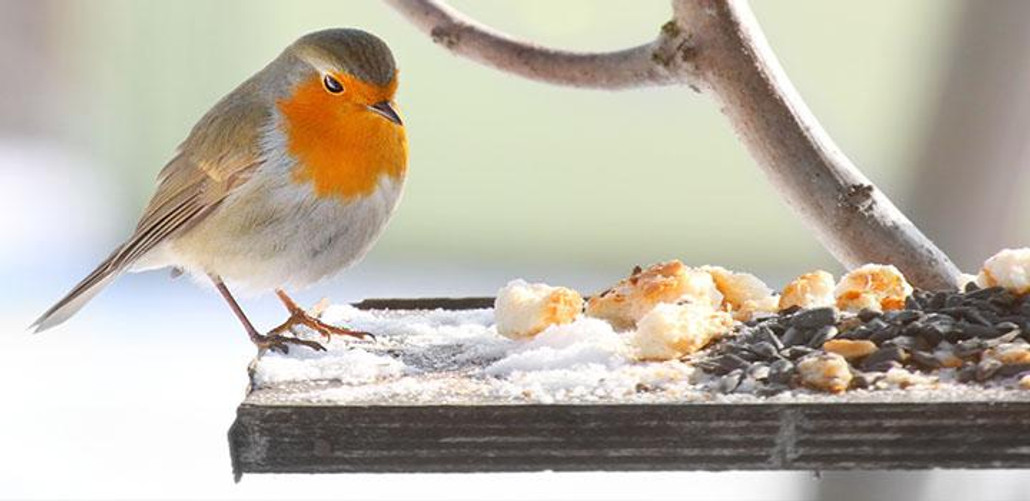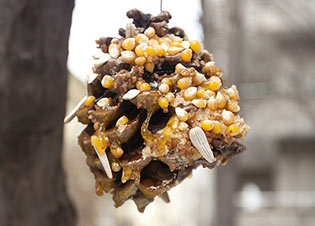
Spicing Up Your Feeding Stations
Posted by Grange Co-op on 6th Feb 2015
 Do you ever get bored scooping out the same sunflower and/or millet seed day after day? We’ll never know if the birds get bored too, but just in case you and the birds are “yawning” at your feeding routine, try spicing up your feeder offerings. Here are a few suggestions, some I have tried, others I've only read about. Not all of these suggestions will work in your back yard as everyone’s habitat and feeder clientele are different. Do whatever makes you and your birds happy.
Do you ever get bored scooping out the same sunflower and/or millet seed day after day? We’ll never know if the birds get bored too, but just in case you and the birds are “yawning” at your feeding routine, try spicing up your feeder offerings. Here are a few suggestions, some I have tried, others I've only read about. Not all of these suggestions will work in your back yard as everyone’s habitat and feeder clientele are different. Do whatever makes you and your birds happy.

1. Mealworms. If you haven’t heard of feeding mealworms then you haven’t been reading my newsletters! Mealworms can be fed live or dried. Live mealworms tend to be more exciting for the birds, but dried are easier to use and store. Look for our new Rogue wild bird seed mix with dried mealworms added, Rogue Nature’s Best! Initially, bluebirds were the “main event” attracted to mealworms, but many species have become fans of the mealworm: chickadees, nuthatches, woodpeckers, wrens, warblers, tanagers and orioles to name a few. (And for those who have chickens….watch out! They LOVE them!)
2. Nuts. These have become a mainstay at my feeders now. Nuts are attractive to many different species of birds. These should be unsalted nuts (as salt would not be good for your birds). You can offer nuts in specialty wire mesh feeders, in a small hopper feeder, or simply on a platform feeder. My favorite “nut” feeder is the domed dish feeder by Droll Yankee. Watch for chickadees, nuthatches, woodpeckers, and jays to wolf them down!
3. Tree Icing. I've written about this product many times. It is a mixture of peanut butter and suet. It easily spreads on any tree branch or specialty peanut butter feeder. It is a hit at my house. I often see chickadees, nuthatches.
4. Grape Jelly. I usually put grape jelly out in the spring when grosbeaks, orioles and tanagers are due back. I've even had hummingbirds try it out. (Though they may be eating insects that have gotten stuck in it). The sugar content in the jelly makes it a high-energy food for these feeder birds.
5. Berries. Some folks harvest the wild berry crop(s) in late fall, put them in the freezer until the winter weather comes when most of the berry crop is gone, then give them to the feeder birds as a special treat! You can also put out overripe rejects from berries you've bought at the store. Robins will occasionally come to feeders if you have berries offered. Has anyone been able to attract Cedar Waxwings with berries? Let me know.
6. Pumpkin or Melon Seeds. You can save pumpkin, squash, and melon seeds, dry them in the oven, and spread them on a platform feeder. Not all birds can crack these tough seeds, but those that can waste no time. You might find adding the rinds to a compost pile might also attract birds to feed there too.
7. Pasta. I've never tried this, but perhaps the next time I just can’t eat another warm up of pasta, I’ll put it out for the birds and see what happens! I understand they love it!
8. Eggshells. Eggshells can provide beneficial calcium for female birds during the nesting season. Birds can also use the extra mineral during the winter. Rinse the shells and place them in a shallow pan and bake them in the oven at 250 degrees for 20 minutes. This cleaning and baking eliminates the chance that wild birds will be exposed to harmful bacteria from domestic chickens. Crush them up and offer them on a platform feeder all year long.
9. Roadkill or meat scraps. This is one I never would have thought about, but I have read about the virtues of offering meat scraps to a backyard feeding station. Many birds will feed on a carcass on the side of the road, especially the meat and fat (nature’s suet after all)….so why not at a feeder? So next time you have some meat scraps left on your plate, try feeding them to the birds. (Not sure my dogs will agree, however!)
